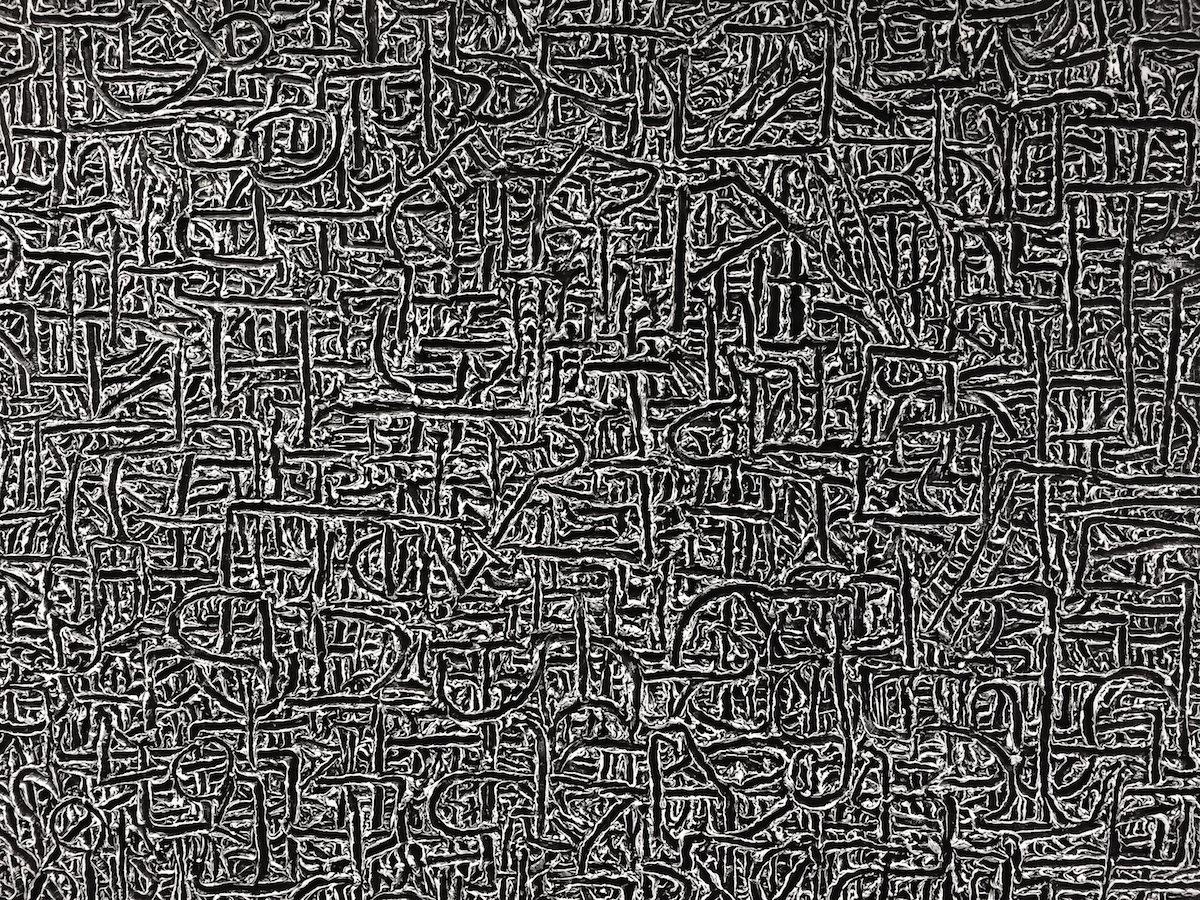Adrian O’Connell’s Interstice at The Engine Room
For this exhibition Adrian O’Connell presents a series of large paintings executed over the last three years. The work springs intentionally from his practice as an installation sculptor. Here, however, the focus is painting, but he deliberately relates the physical presence of each canvas to its surrounding space, and his process of bolting canvases together (using hidden engineering bolts) shows his awareness of the paintings as assembled objects.
Unlike film and video, painting allows our awareness to set its own rhythm. Many of the paintings show obvious grids, but the grids do not dictate or control. Rather than a rigid lattice we see a woven matrix of human motifs that come and go as the eye traverses the canvas. The visual rhythm is not mechanical, like a metronome – more the dappled pulse of a flow-of-consciousness narrative. The accretion of content progressively subtracts from the discernibility of the existing motifs. This layering produces an unrubbed palimpsest suggesting a thousand conversations we cannot hear but might well imagine. It is figuration hidden in plain sight.
The artist does allow us to get lost in the intricacies of the drawing which is expressive and exquisitely calligraphic in places – but the attached monochromatic bars and the superimposed geometric ‘projections’ act as ironist devices that bracket off any hint of expressionism. These devices cool the work down and encourage us to interpret the marks dispassionately, as carriers of abstract meaning.
The smaller barcode pieces refer to one of our most ubiquitous contemporary cultural tropes, pointing to a technology that automates our economic transactions, inexorably replacing direct human intercourse. Each beep of a checkout scanner is a descendant of the spit-and-handshake of the horse trader, but sanitised – standardised efficiency at the expense of personal contact.
O’Connell works indirectly with ideas of control, influence and alienation, with purity of intent and rigorous commitment to an intuitive process of research-through-making. We see here an abstract visual realisation of pre-verbal ideas that are more sociopolitical than spiritual or expressionist. The paintings are conceptual, the outcome of ongoing investigation that, to use philosopher and critic Arthur Danto’s distinction, embodies rather than illustrates. What the work shares with Minimalism is its precision and sense of immediacy, but it injects a richness of reference not so evident in most Minimalist art.
